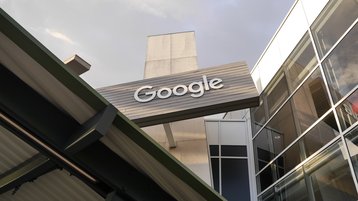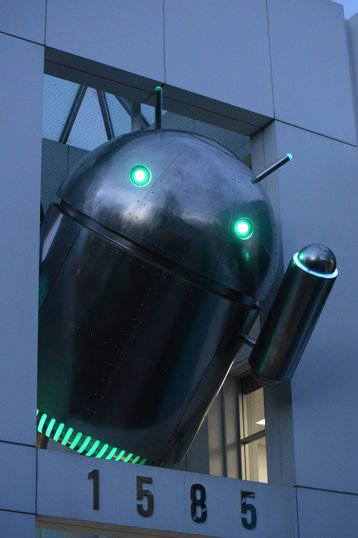In its latest quarterly earnings report, Google parent Alphabet shared some details about the growth of its cloud division, and confirmed it will be building a cloud region in Saudi Arabia.
The American multinational conglomerate saw 23.5 percent revenue growth year-over-year, across all its companies and divisions, bringing in $24.8 billion in its first quarter of 2018. The company made $9.4 billion in profit, primarily from its data-driven advertising business.
All aboard
“Last quarter, we shared some exciting metrics about the progress of Google Cloud, including that we passed $1 billion per quarter in 2017,” Google CEO Sundar Pichai said in an earnings call (transcribed by Seeking Alpha).
“In Q1, we saw increasing momentum. We are growing across the board and are also signing significantly larger, more strategic deals for cloud. Our security capabilities, the easy-to-use advanced data analytics and machine learning solutions and the secure and industry-leading collaboration platform, G Suite, are winning customers over. Google Cloud is growing well.”
Pichai then added: “Our global infrastructure continues to expand to support demand. We commissioned three new subsea cables and announced new regions in Canada, Japan, Netherlands and Saudi Arabia, bringing our total of recently launched and upcoming regions to 20.”
The total of launched and upcoming Google Cloud regions is currently 19 on its website, with Pichai’s comments the first confirmation that its Saudi Arabian efforts will result in a cloud region.
Rumors of a Saudi Arabian cloud launch spread earlier this year, with Alphabet in talks with Saudi Aramco on a data center and tech hub joint venture.
In March, heir apparent Saudi Crown Prince Mohammed bin Salman toured New York as part of the 2018 Saudi-U.S. CEO Forum, and announced several major memorandums of understanding, including an ‘Aramco-Google partnership focused on national cloud services and other technology opportunities,’ but it was still not clear if the data centers would be part of the larger Google Cloud infrastructure. That appears to now be the case.
Earlier this month, on a tour of Silicon Valley, the prince met with Sundar Pichai, as well as Google co-founder Sergey Brin and Google’s VP of technical infrastructure, Urs Hölzle, the head of Google’s cloud business, Diane Greene, and Google SVP Hiroshi Lockheimer, who heads Android, Chrome and other platforms.
Why Google?
During the earnings call, Pichai was asked about what differentiated the Google Cloud service. He said: “I think the main thing I would say is the fundamental drivers of adoption of Google Cloud based on what we hear back from customers is our advantage in data analytics and machine learning. The fact that we really support open, agile development environment.
“Kubernetes has literally become the standard for workloads and the fact that we are open in terms of how we approach this space. Security is becoming a big differentiator for us and something we’ve been leading for a while, and I think that’s driving it. G Suite, as I called out earlier, is a good synergistic driver. G Suite is doing well, and clearly, a very unique offering, and it’s gotten very comprehensive. And so I think overall, it comes together well.”
But to build all the infrastructure required for Google Cloud, G Suite and Google’s own services like Search, YouTube and Google Assistant, requires significant investment. Previously, Google revealed it had spent $30 billion on infrastructure over three years, while most Google data centers DCD writes about are around $600 million in their first phase.
This quarter, infrastructure capex rose sharply, tripling to $7.56bn - with that including Google offices and land acquisitions unrelated to data centers. One of the reasons for the rise was the $2.4 billion purchase of New York’s Chelsea Market to turn the site into Google offices, but there was also an increase in expenditure on digital infrastructure.
“That [increase] reflects investments in compute power to support growth that we see across Google, and the largest component is on machines,” CFO Ruth Porat said. “It’s also on data centers and undersea cables. And on machines, the biggest contributor is the demand that we’re seeing. So in particular, it’s the expanding application of the machine learning efforts across Alphabet, plus the requirements for cloud and Search and YouTube, and then secondarily, the increased cost of newer technologies, CPUs, memory, network.”
Google’s headcount also grew by 4,940 during the quarter, with the Cloud business its division with the most hires.


